Abstract
1. Under conditions where heart rate, mean aortic pressure and enddiastolic pressure in the left ventricle are held constant, the intravenous infusion of isoprenaline is accompanied by large changes in dP/dt max in the left ventricle.
2. Under similar conditions, during stepwise increments in the rate of infusion of isoprenaline the changes in dP/dt max (measured at a constant paced heart rate) were proportional to changes in the free (intrinsic) heart rate. It is concluded that dP/dt max is a quantitative index of inotropic changes in the left ventricle.
3. In comparison to dP/dt max, three other variables which have been used to indicate inotropic changes in the heart (peak pressure in the left ventricle, duration of systole and stroke work at constant end-diastolic pressure), were shown to be unreliable indices of inotropic changes.
4. Using dP/dt max to indicate inotropic changes, alteration in the heart rate while mean aortic pressure and end-diastolic pressure in the left ventricle were held constant, and in mean aortic pressure while heart rate ane end-diastolic pressure in the left ventricle were held constant, were each shown to be accompanied by small inotropic changes in the heart.
5. Under similar conditions, changes in end-diastolic pressure in the left ventricle alone were not accompanied by inotropic changes as indicated by dP/dt max.
Full text
PDF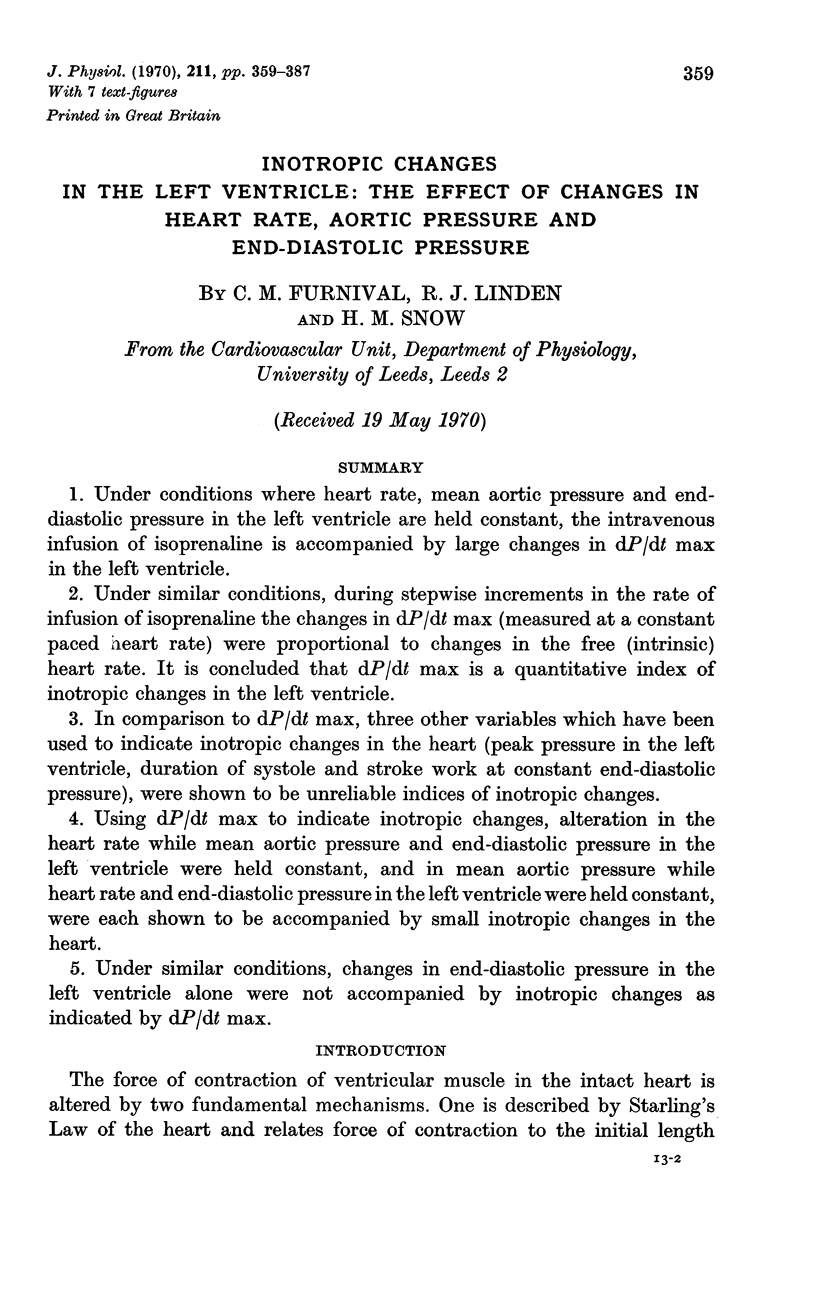
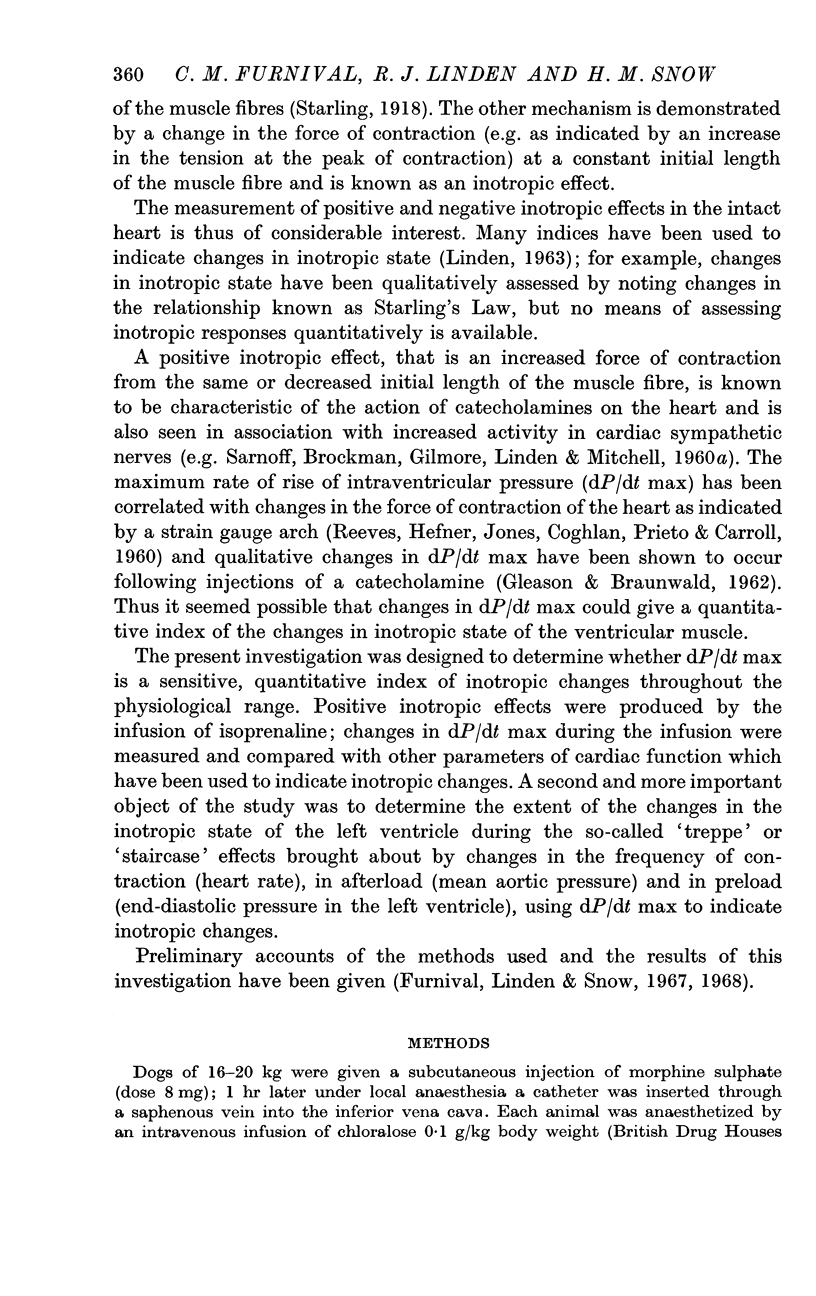

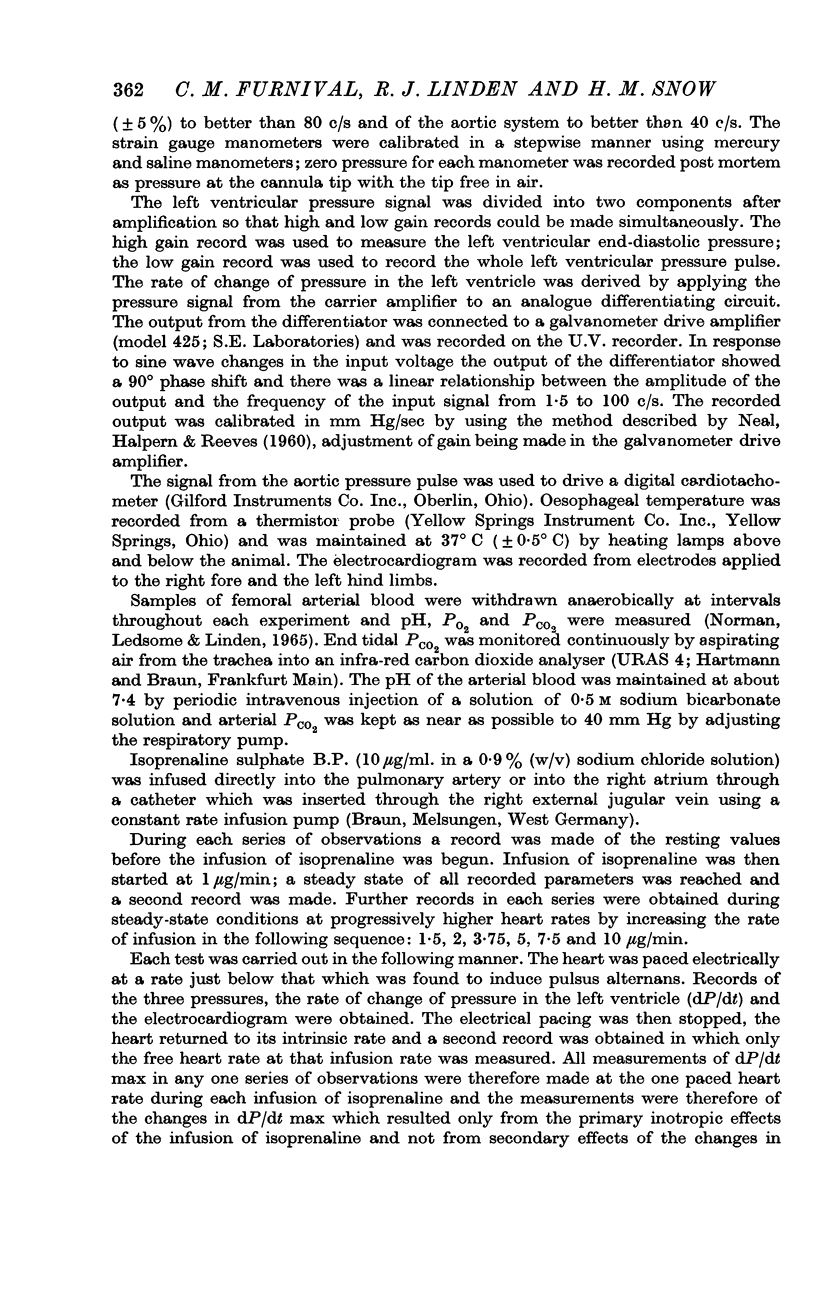
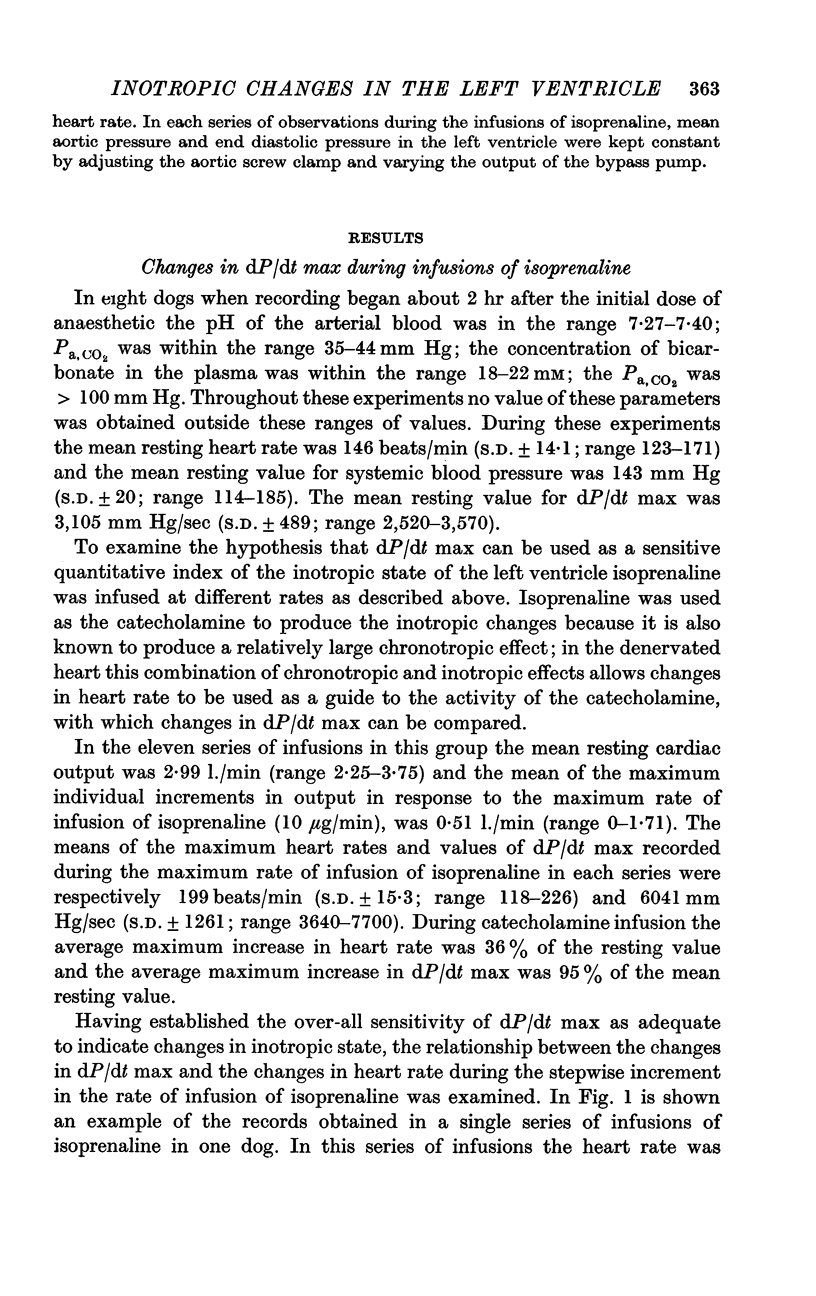


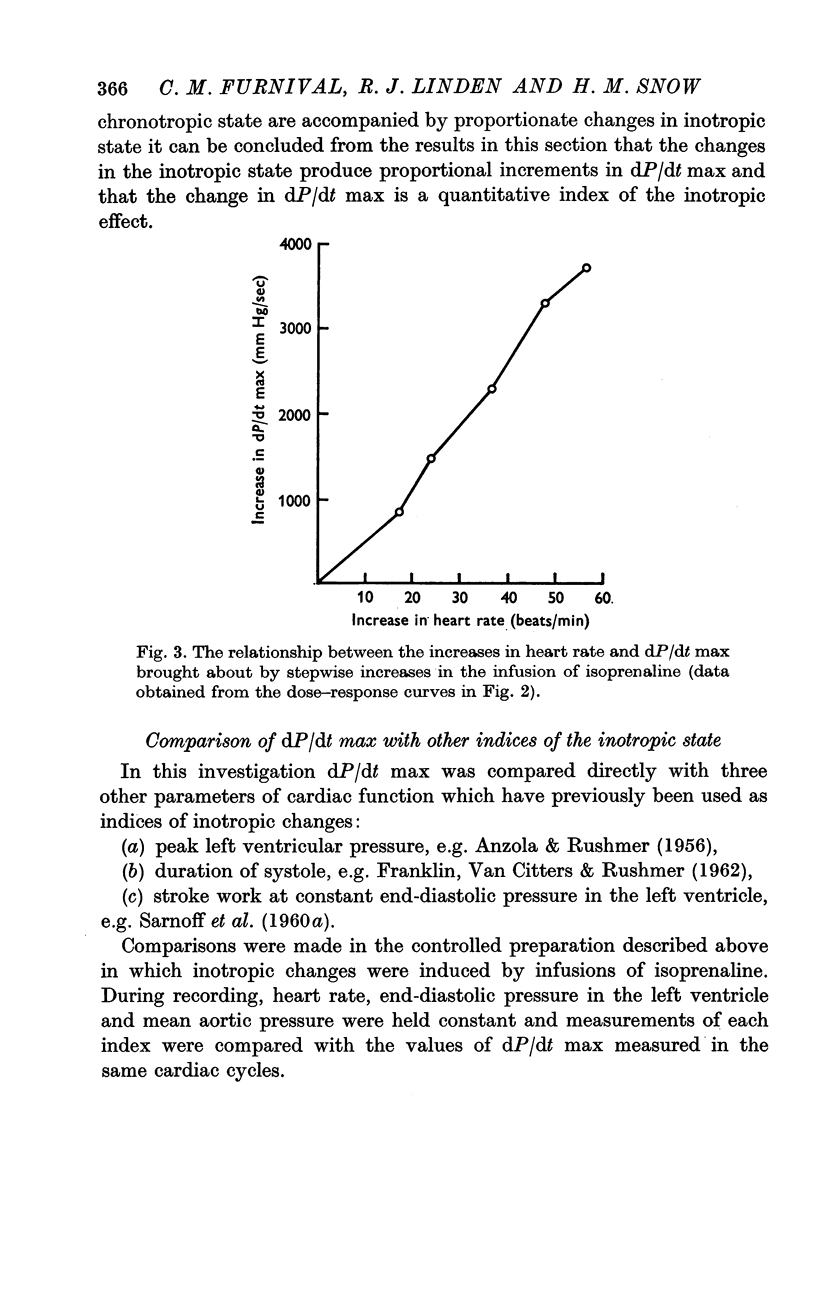
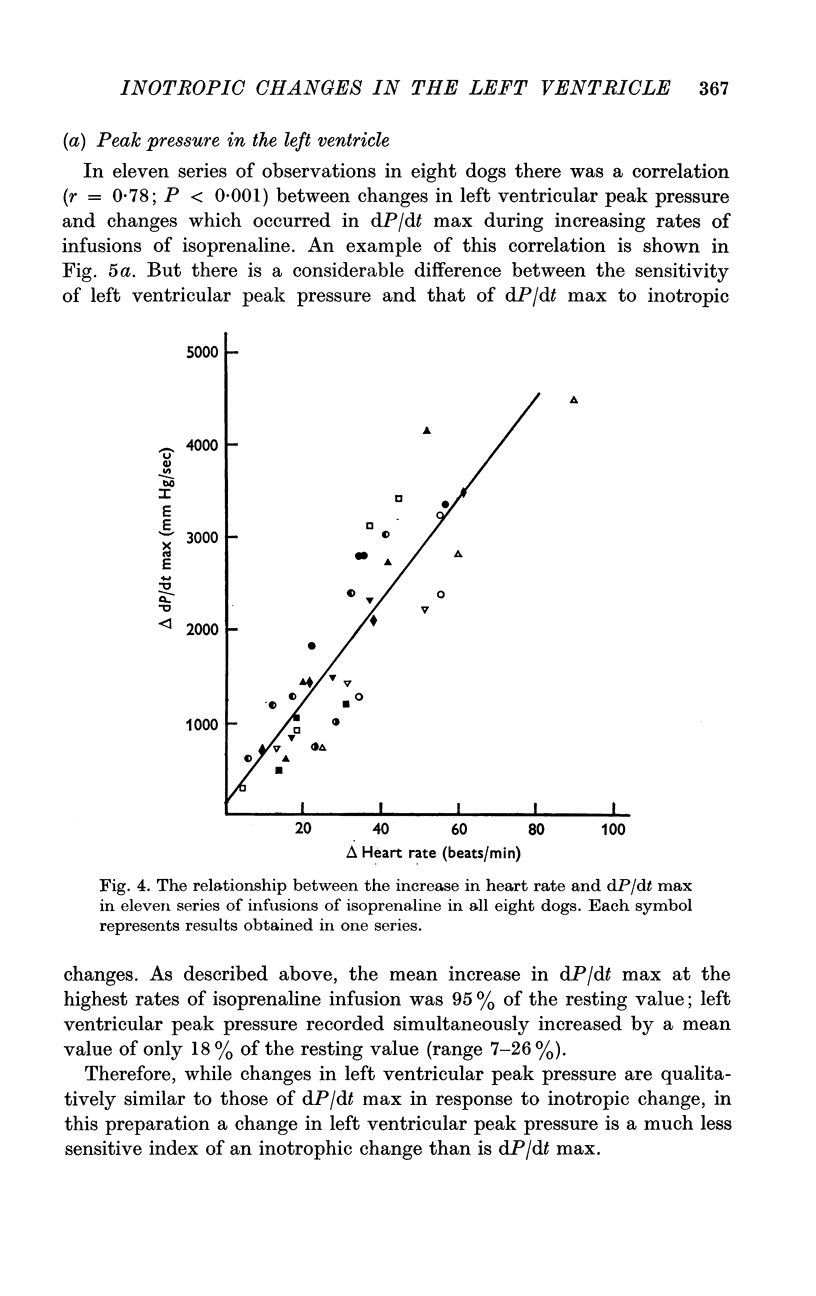
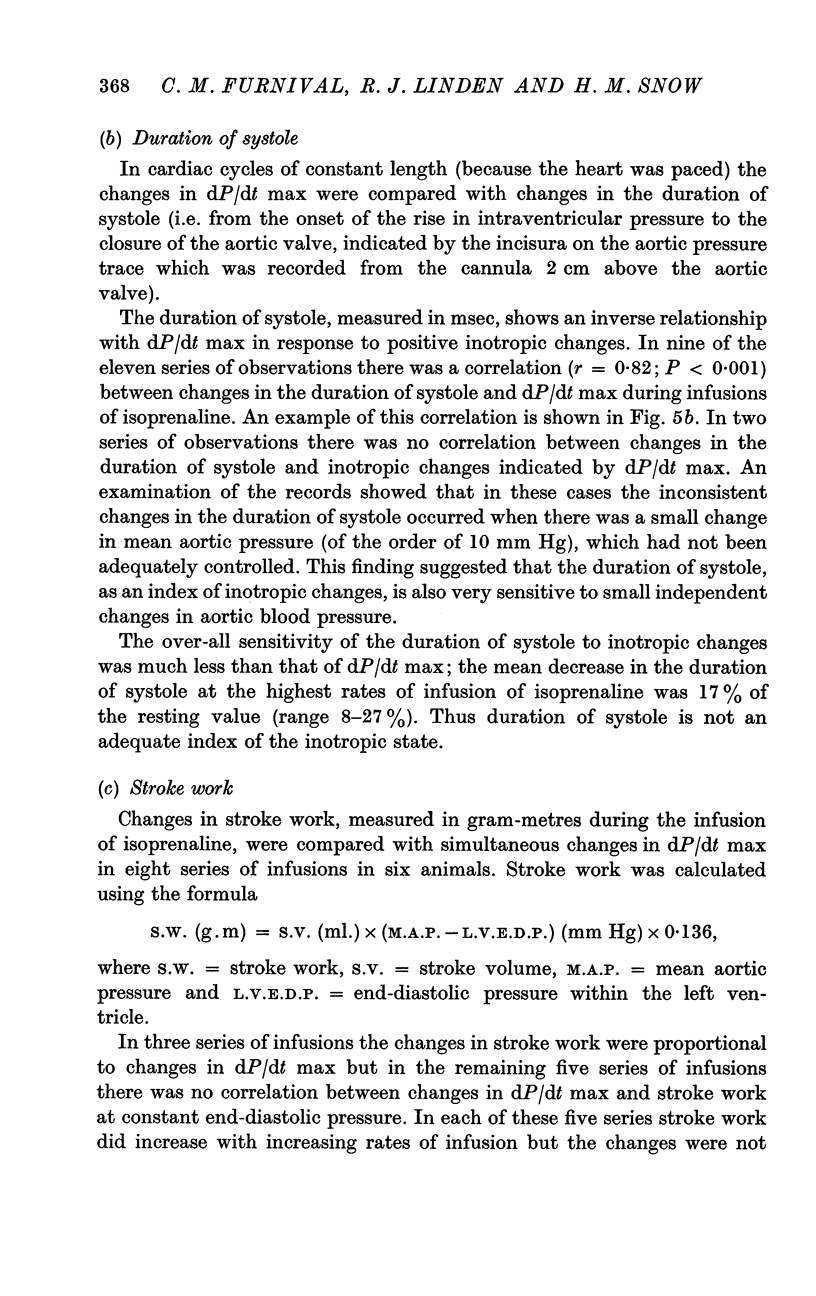
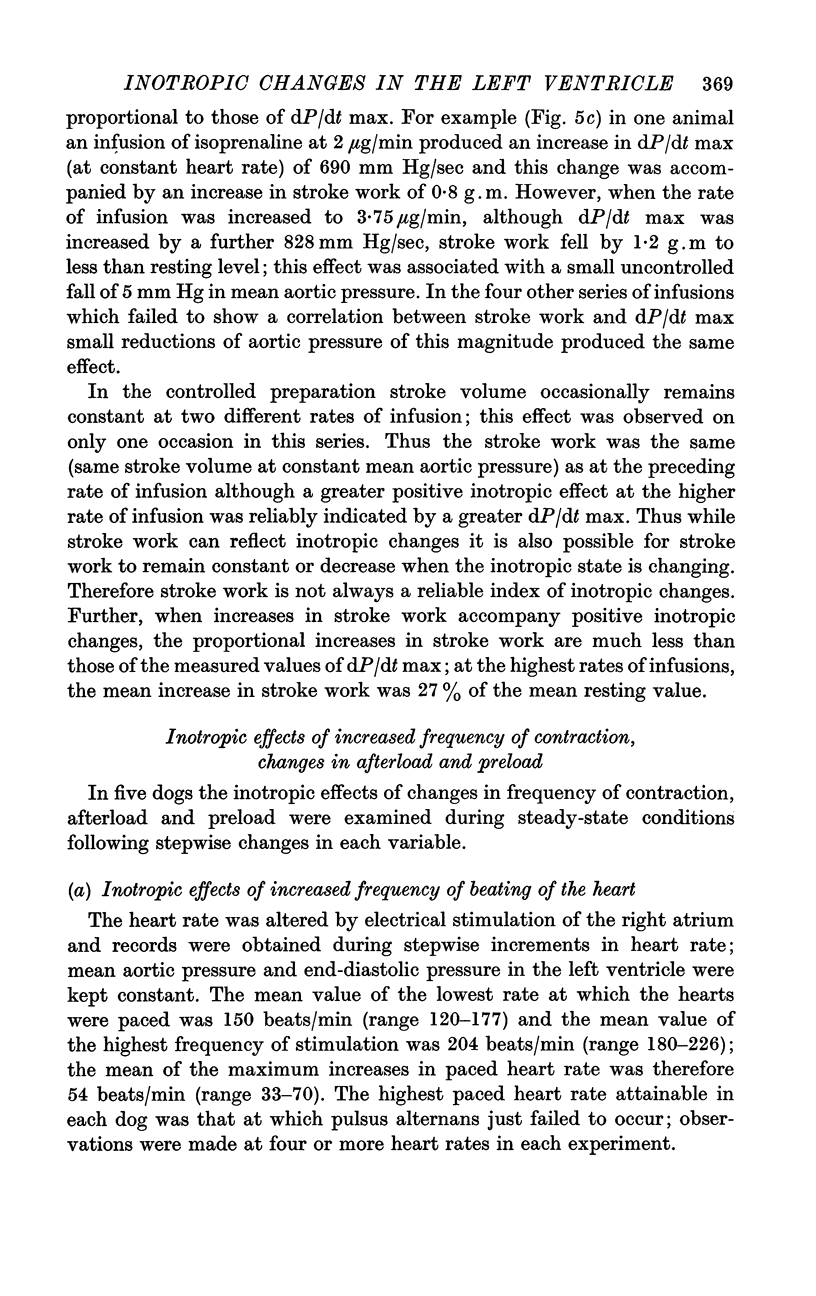


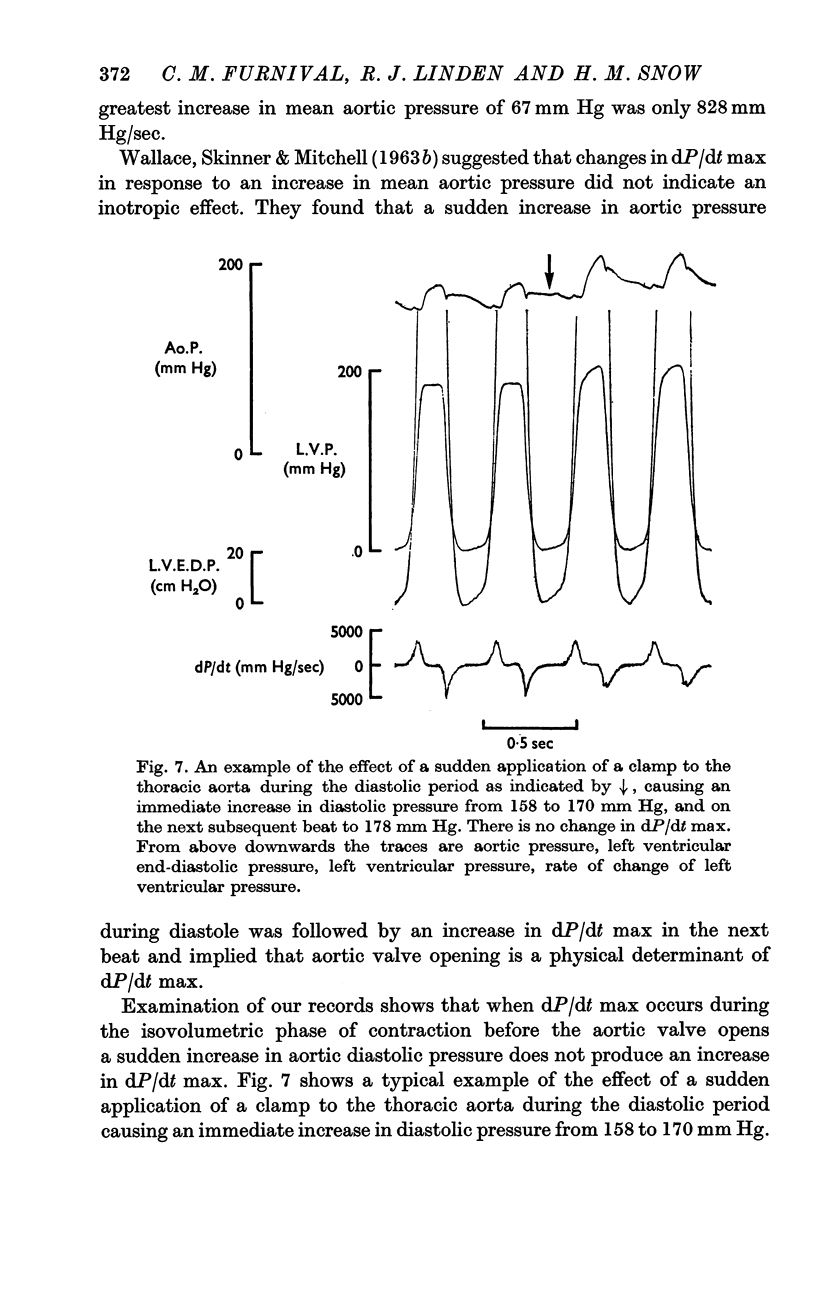

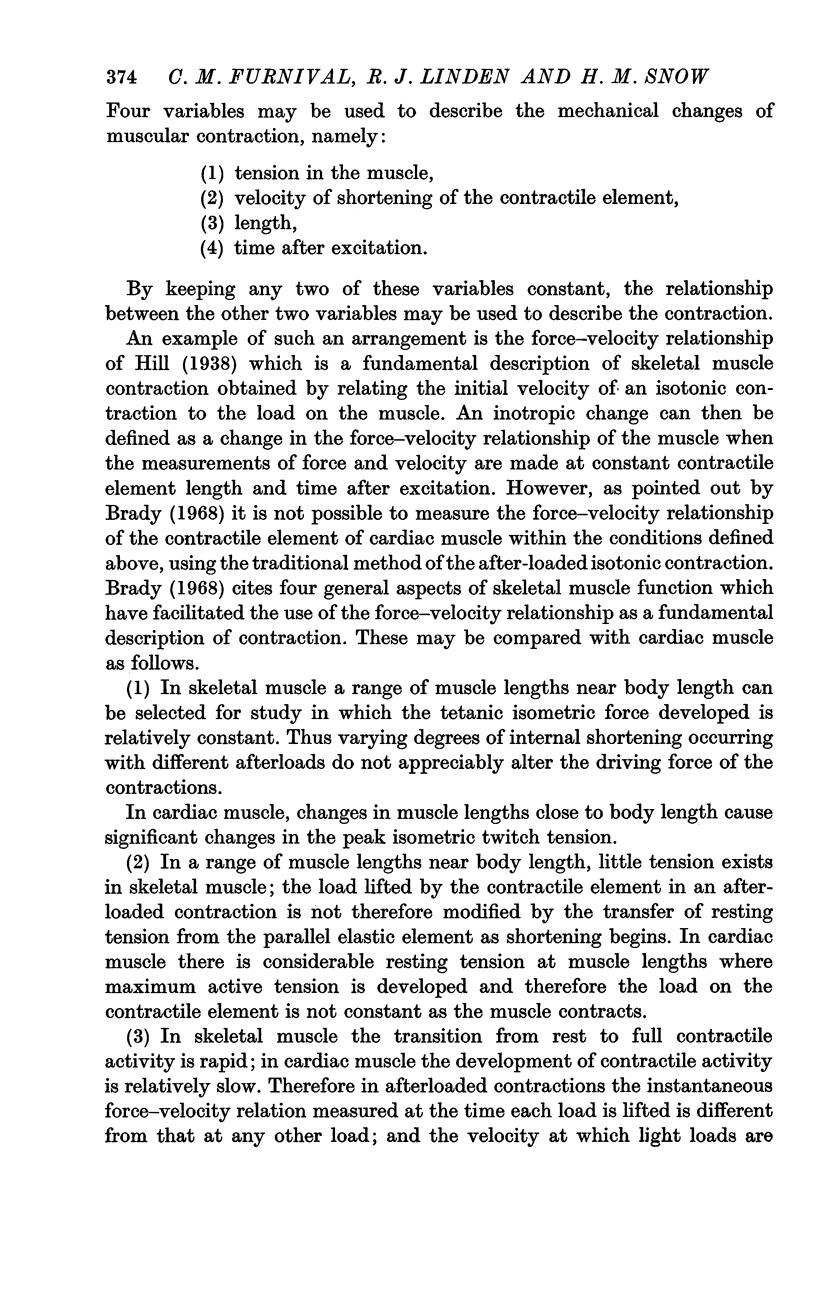

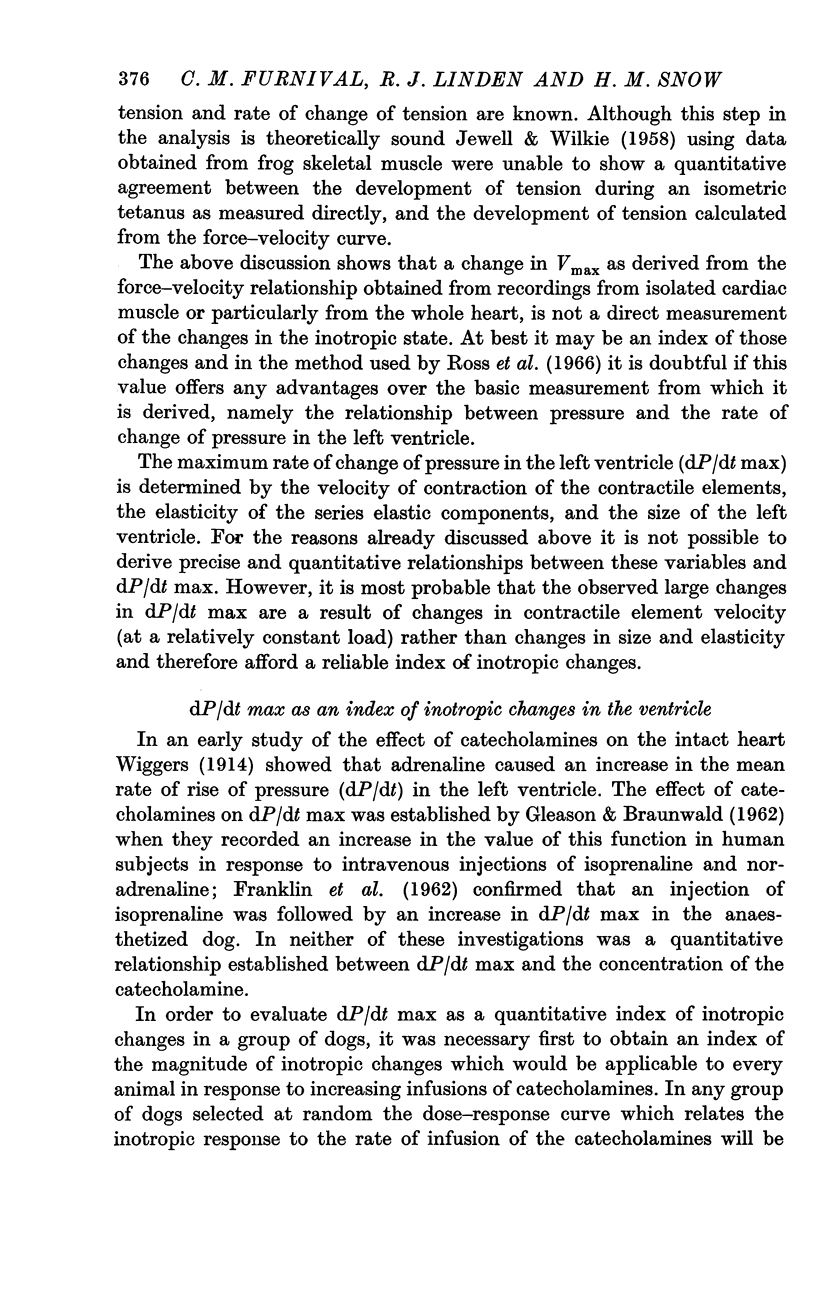
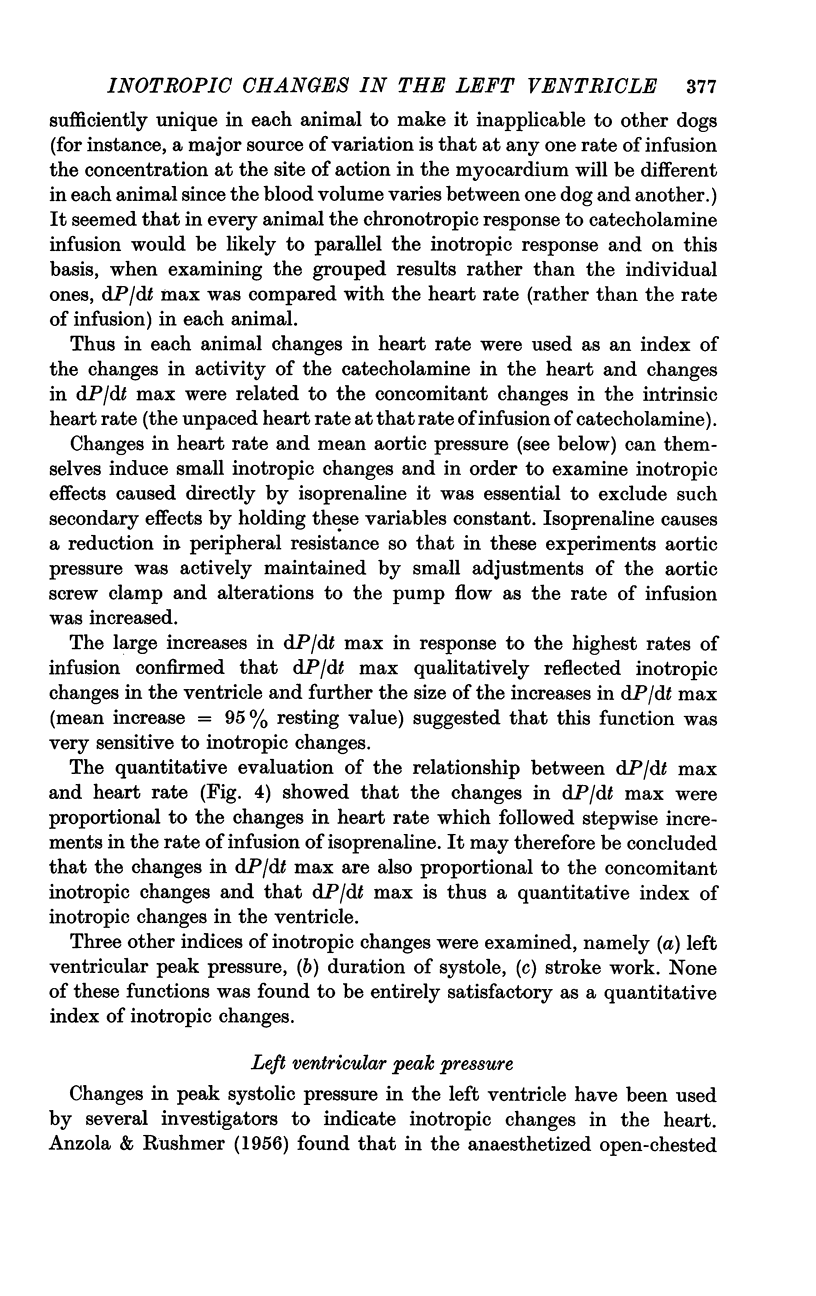
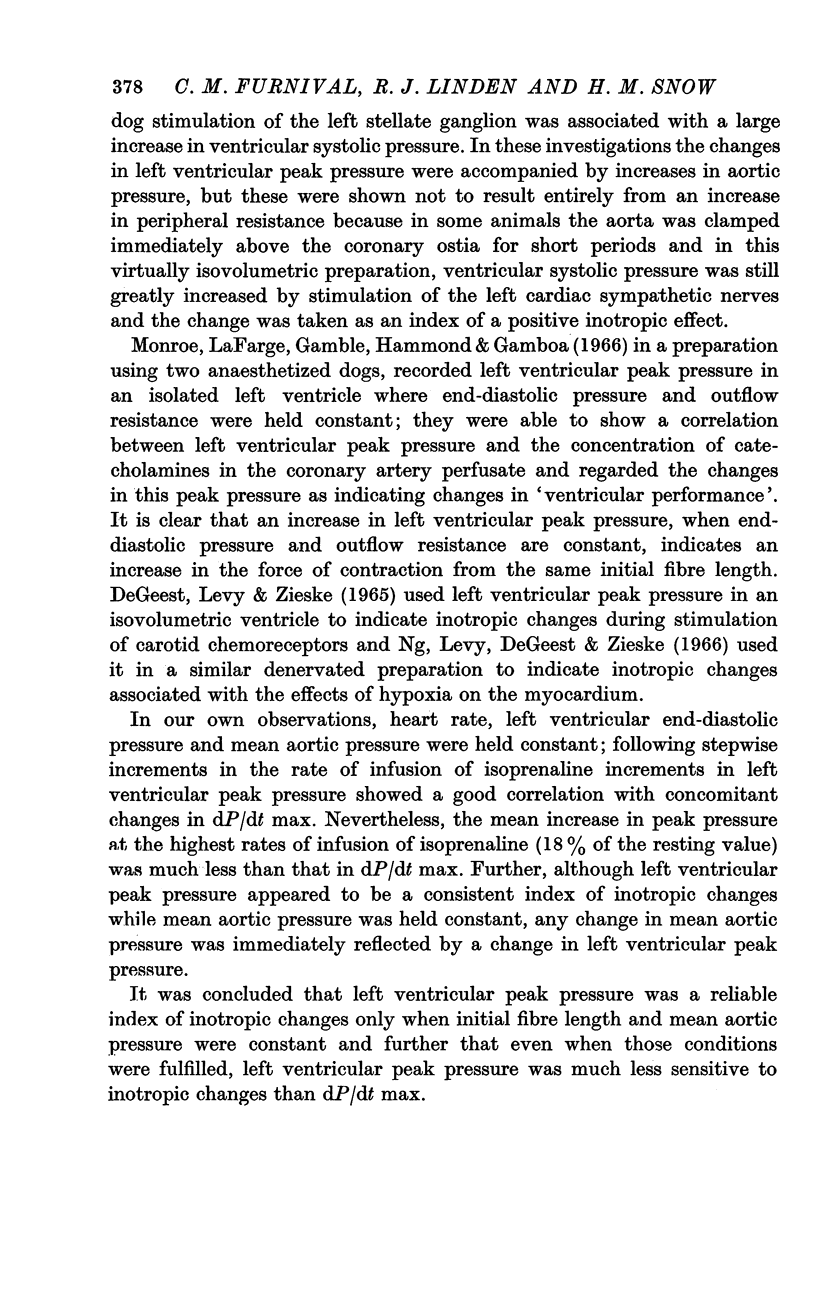
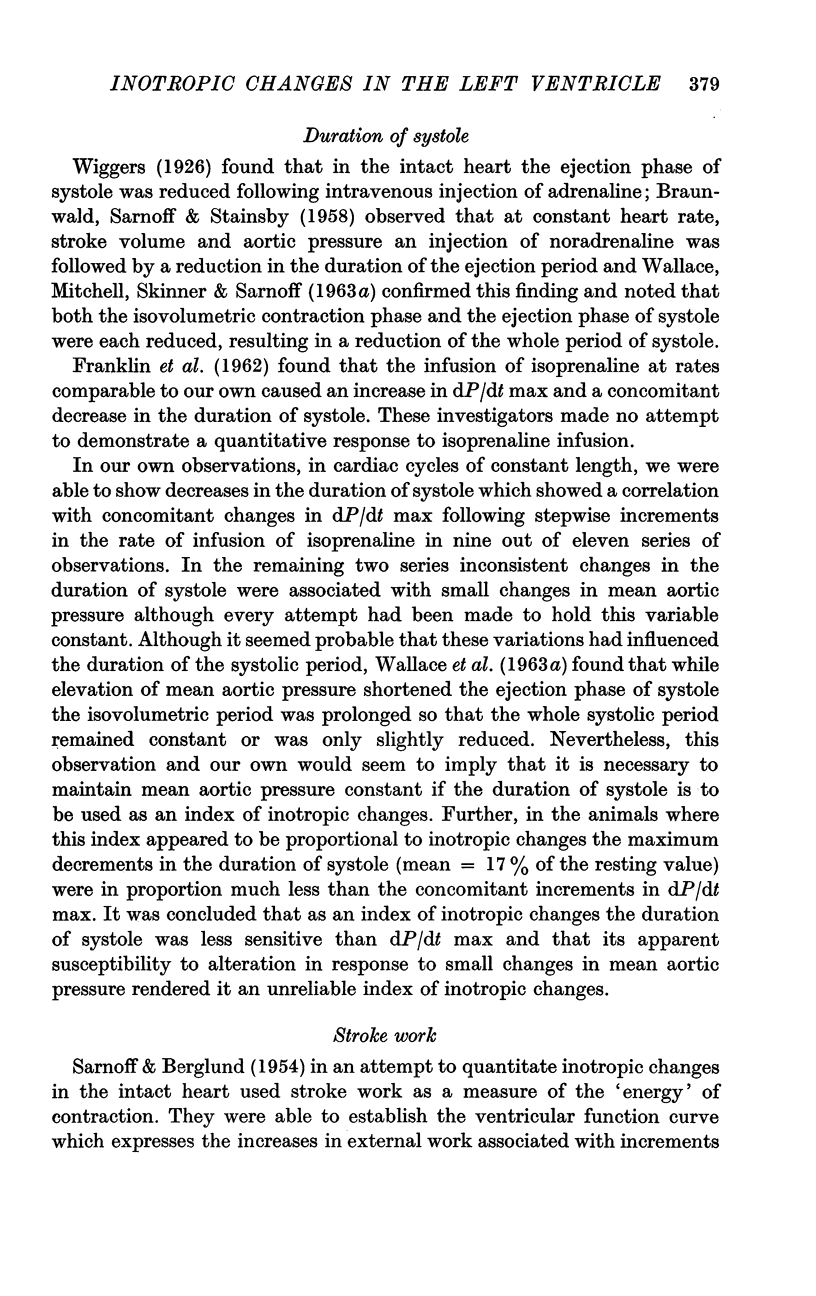

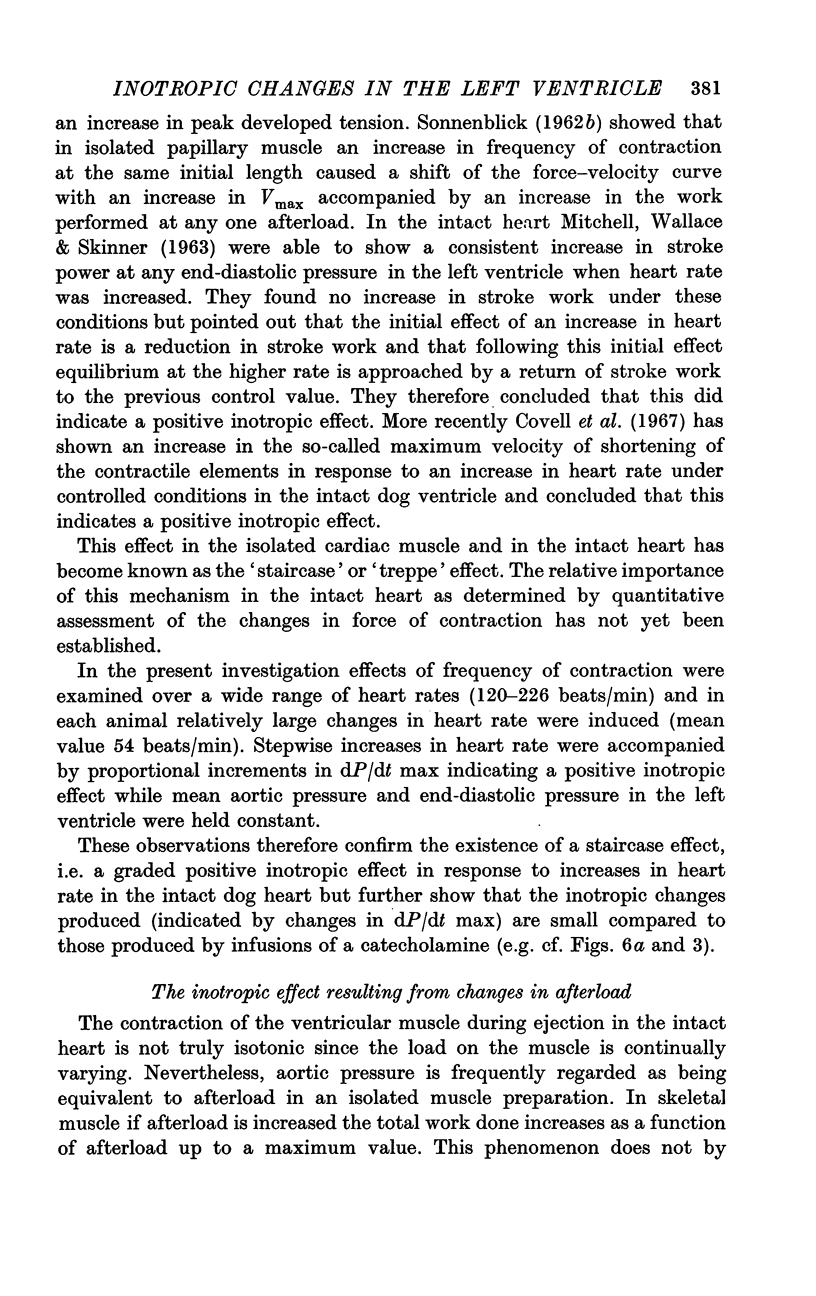
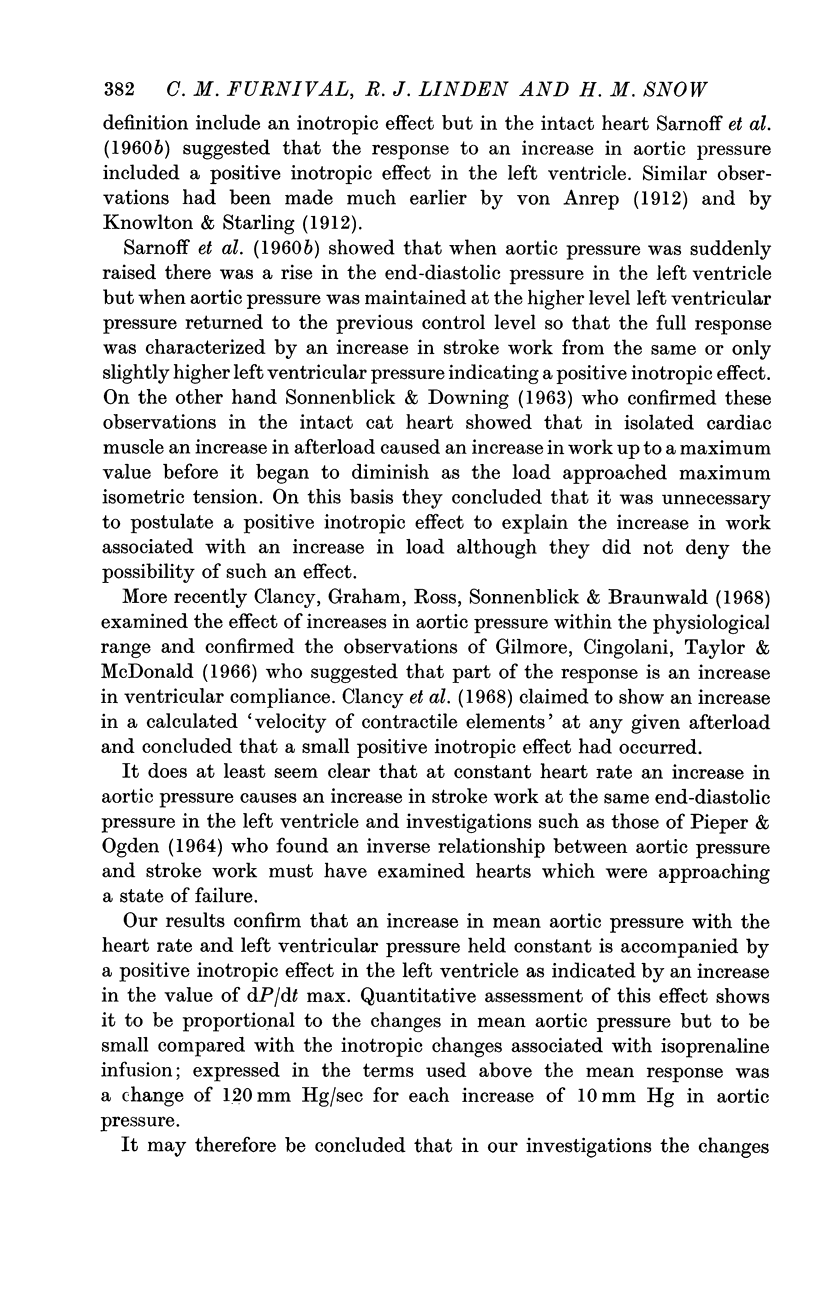




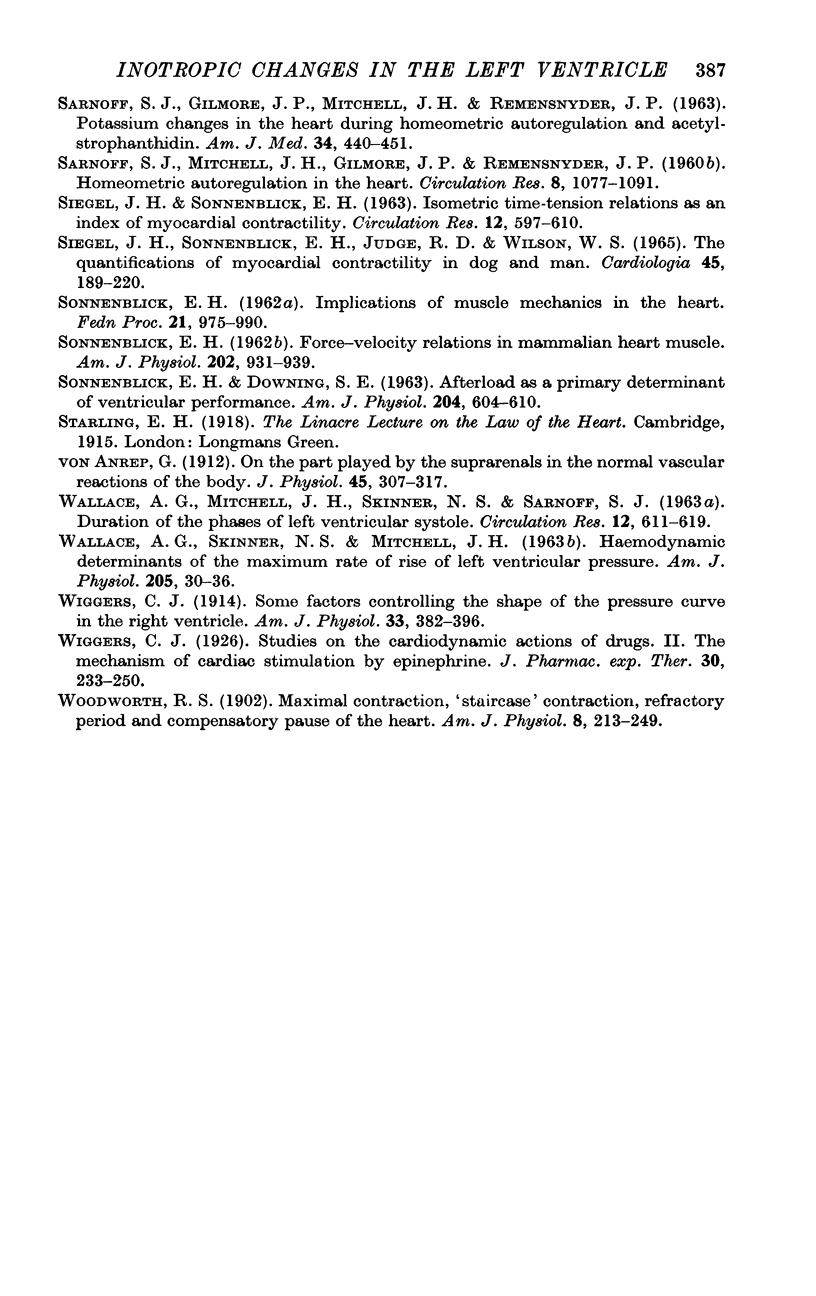
Selected References
These references are in PubMed. This may not be the complete list of references from this article.
- ABBOTT B. C., MOMMAERTS W. F. A study of inotropic mechanisms in the papillary muscle preparation. J Gen Physiol. 1959 Jan 20;42(3):533–551. doi: 10.1085/jgp.42.3.533. [DOI] [PMC free article] [PubMed] [Google Scholar]
- ANZOLA J., RUSHMER R. F. Cardiac responses to sympathetic stimulation. Circ Res. 1956 May;4(3):302–307. doi: 10.1161/01.res.4.3.302. [DOI] [PubMed] [Google Scholar]
- BLINKS J. R., KOCH-WESER J. PHYSICAL FACTORS IN THE ANALYSIS OF THE ACTIONS OF DRUGS ON MYOCARDIAL CONTRACTILITY. Pharmacol Rev. 1963 Sep;15:531–599. [PubMed] [Google Scholar]
- BRAUNWALD E., SARNOFF S. J., STAINSBY W. N. Determinants of duration and mean rate of ventricular ejection. Circ Res. 1958 May;6(3):319–325. doi: 10.1161/01.res.6.3.319. [DOI] [PubMed] [Google Scholar]
- Brady A. J. Active state in cardiac muscle. Physiol Rev. 1968 Jul;48(3):570–600. doi: 10.1152/physrev.1968.48.3.570. [DOI] [PubMed] [Google Scholar]
- Brady A. J. Time and displacement dependence of cardiac contractility: problems in defining the active state and force-velocity relations. Fed Proc. 1965 Nov-Dec;24(6):1410–1420. [PubMed] [Google Scholar]
- Brutsaert D. L. Studies on the potentiation of contractility of heart papillary muscle by paired stimulation. Arch Int Physiol Biochim. 1966 Sep;74(4):642–664. doi: 10.3109/13813456609059942. [DOI] [PubMed] [Google Scholar]
- Clancy R. L., Graham T. P., Jr, Ross J., Jr, Sonnenblick E. H., Braunwald E. Influence of aortic pressure-induced homeometric autoregulation on myocardial performance. Am J Physiol. 1968 May;214(5):1186–1192. doi: 10.1152/ajplegacy.1968.214.5.1186. [DOI] [PubMed] [Google Scholar]
- Covell J. W., Ross J., Jr, Taylor R., Sonnenblick E. H., Braunwald E. Effects of increasing frequency of contraction on the force velocity relation of left ventricle. Cardiovasc Res. 1967 Jan;1(1):2–8. doi: 10.1093/cvr/1.1.2. [DOI] [PubMed] [Google Scholar]
- De Geest H., Levy M. N., Zieske H. Carotid chemoreceptor stimulation and ventricular performance. Am J Physiol. 1965 Sep;209(3):564–570. doi: 10.1152/ajplegacy.1965.209.3.564. [DOI] [PubMed] [Google Scholar]
- FRANKLIN D. L., VAN CITTERS R. L., RUSHMER R. F. Left ventricular function described in physical terms. Circ Res. 1962 Oct;11:702–711. doi: 10.1161/01.res.11.4.702. [DOI] [PubMed] [Google Scholar]
- GLEASON W. L., BRAUNWALD E. Studies on the first derivative of the ventricular pressure pulse in man. J Clin Invest. 1962 Jan;41:80–91. doi: 10.1172/JCI104469. [DOI] [PMC free article] [PubMed] [Google Scholar]
- Gilmore J. P., Cingolani H. E., Taylor R. R., McDonald R. H., Jr Physical factors and cardiac adaptation. Am J Physiol. 1966 Nov;211(5):1219–1226. doi: 10.1152/ajplegacy.1966.211.5.1219. [DOI] [PubMed] [Google Scholar]
- JEWELL B. R., WILKIE D. R. An analysis of the mechanical components in frog's striated muscle. J Physiol. 1958 Oct 31;143(3):515–540. doi: 10.1113/jphysiol.1958.sp006075. [DOI] [PMC free article] [PubMed] [Google Scholar]
- Knowlton F. P., Starling E. H. The influence of variations in temperature and blood-pressure on the performance of the isolated mammalian heart. J Physiol. 1912 May 6;44(3):206–219. doi: 10.1113/jphysiol.1912.sp001511. [DOI] [PMC free article] [PubMed] [Google Scholar]
- Ledsome J. R., Linden R. J., Norman J. An anaesthetic machine for dogs. J Physiol. 1967 Jul;191(2):61P–62P. [PubMed] [Google Scholar]
- NEAL J. J., Jr, HALPERN W., REEVES T. J. Velocity and acceleration of pressure change in heart and arteries. J Appl Physiol. 1960 Jul;15:747–749. doi: 10.1152/jappl.1960.15.4.747. [DOI] [PubMed] [Google Scholar]
- Ng M. L., Levy M. N., DeGeest H., Zieske H. Effects of myocardial hypoxia on left ventricular performance. Am J Physiol. 1966 Jul;211(1):43–50. doi: 10.1152/ajplegacy.1966.211.1.43. [DOI] [PubMed] [Google Scholar]
- Norman J., Ledsome J. R., Linden R. J. A system for the measurement of respiratory and acid-base parameters in blood. Br J Anaesth. 1965 Jul;37(7):466–479. doi: 10.1093/bja/37.7.466. [DOI] [PubMed] [Google Scholar]
- PIEPER H. P., OGDEN E. DETERMINANTS OF STROKE WORK IN THE DOG HEART-LUNG PREPARATION. Am J Physiol. 1964 Jan;206:43–48. doi: 10.1152/ajplegacy.1964.206.1.43. [DOI] [PubMed] [Google Scholar]
- REEVES T. J., HEFNER L. L., JONES W. B., COGHLAN C., PRIETO G., CARROLL J. The hemodynamic determinants of the rate of change in pressure in the left ventricle during isometric contraction. Am Heart J. 1960 Nov;60:745–761. doi: 10.1016/0002-8703(60)90358-6. [DOI] [PubMed] [Google Scholar]
- ROSENBLUETH A., ALANIS J., RUBIO R., LOPEZ E. The two staircase phenomena. Arch Int Physiol Biochim. 1959 Jun;67(3):374–383. doi: 10.3109/13813455909072296. [DOI] [PubMed] [Google Scholar]
- SARNOFF S. J., BERGLUND E. Ventricular function. I. Starling's law of the heart studied by means of simultaneous right and left ventricular function curves in the dog. Circulation. 1954 May;9(5):706–718. doi: 10.1161/01.cir.9.5.706. [DOI] [PubMed] [Google Scholar]
- SARNOFF S. J., BROCKMAN S. K., GILMORE J. P., LINDEN R. J., MITCHELL J. H. Regulation of ventricular contraction. Influence of cardiac sympathetic and vagal nerve stimulation on atrial and ventricular dynamics. Circ Res. 1960 Sep;8:1108–1122. doi: 10.1161/01.res.8.5.1108. [DOI] [PubMed] [Google Scholar]
- SARNOFF S. J., GILMORE J. P., MITCHELL J. H., REMENSNYDER J. P. Potassium changes in the heart during homeometric autoregulation and acetyl strophanthidin. Am J Med. 1963 Apr;34:440–451. doi: 10.1016/0002-9343(63)90066-4. [DOI] [PubMed] [Google Scholar]
- SARNOFF S. J., MITCHELL J. H., GILMORE J. P., REMENSNYDER J. P. Homeometric autoregulation in the heart. Circ Res. 1960 Sep;8:1077–1091. doi: 10.1161/01.res.8.5.1077. [DOI] [PubMed] [Google Scholar]
- SIEGEL J. H., SONNENBLICK E. H. Isometric time-tension relationships as an index of myocardial contractility. Circ Res. 1963 Jun;12:597–610. doi: 10.1161/01.res.12.6.597. [DOI] [PubMed] [Google Scholar]
- SIEGEL J. H., SONNENBLICK E. H., JUDGE R. D., WILSON W. S. THE QUANTIFICATION OF MYOCARDIAL CONTRACTILITY IN DOG AND MAN. Cardiologia. 1964;45:189–221. doi: 10.1159/000168110. [DOI] [PubMed] [Google Scholar]
- SONNENBLICK E. H., DOWNING S. E. Afterload as a primary determinat of ventricular performance. Am J Physiol. 1963 Apr;204:604–610. doi: 10.1152/ajplegacy.1963.204.4.604. [DOI] [PubMed] [Google Scholar]
- SONNENBLICK E. H. Force-velocity relations in mammalian heart muscle. Am J Physiol. 1962 May;202:931–939. doi: 10.1152/ajplegacy.1962.202.5.931. [DOI] [PubMed] [Google Scholar]
- SONNENBLICK E. H. Implications of muscle mechanics in the heart. Fed Proc. 1962 Nov-Dec;21:975–990. [PubMed] [Google Scholar]
- WALLACE A. G., MITCHELL J. H., SKINNER N. S., SARNOFF S. J. Duration of the phases of left ventricular systole. Circ Res. 1963 Jun;12:611–619. doi: 10.1161/01.res.12.6.611. [DOI] [PubMed] [Google Scholar]
- WALLACE A. G., SKINNER N. S., Jr, MITCHELL J. H. Hemodynamic determinants of the maximal rate of rise of left ventricular pressure. Am J Physiol. 1963 Jul;205:30–36. doi: 10.1152/ajplegacy.1963.205.1.30. [DOI] [PubMed] [Google Scholar]
- von Anrep G. On the part played by the suprarenals in the normal vascular reactions of the body. J Physiol. 1912 Dec 9;45(5):307–317. doi: 10.1113/jphysiol.1912.sp001553. [DOI] [PMC free article] [PubMed] [Google Scholar]


